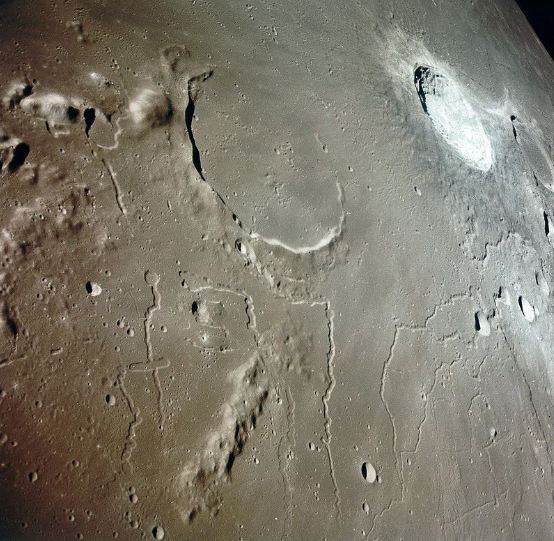Mysteries about the Moon attract humans to explore more and to have a broader understanding of what life is there. From the Earth, we are always mesmerized and fascinated by its beauty. Even the observers during the 17th century curiously investigated and looked at it using earlier types of telescopes. They saw vast plains of basaltic lavas that blanket a wide area of the lunar surface.
With limited knowledge and unsophisticated technology, these astronomers thought that what they saw were bodies of water or seas of lunar water. They called it “mare” in Latin, meaning “seas.” Besides this, what was also found were other volcanic features that occur within the lunar mare, including the sinuous rilles, dark mantling deposits, and little volcanic domes and cones. These features are small yet form a tiny fraction of the lunar volcanic record.
In reality, the lunar maria are the most extensive topographic features on the Moon that can be seen from Earth with the unaided eye. These are huge basins formed beginning about 3.9 billion years ago when asteroid-sized bodies intensely bombarded the Moon. For over a long period that lasted over billion years ago, a sequence of volcanic events flooded the giant basins and the surrounded low-lying areas with magma that came from hundreds of kilometers within the interior.
Seemingly, the giant impact basins were on the Moon’s near and far sides, yet most far sides were never flooded with lava to form maria or mare. Further studies are yet to be done to clarify the reasons, but assumptions support the idea that the Moon’s asymmetrical crust appears twice as thick on the far side as on the near side and is less likely to have been entirely punctured by large impacts. Most of the maria are linked with mascons or the significantly less dense lava regions that create anomalies in the Moon’s gravitational field.
Apollo astronauts brought lunar rock and soil samples to prove basalt formed from surface lava flows that solidified comprised the lunar maria. From the surface and about nearly 5 meters below shows the impact of churning, fusing, and fragmenting due to a bombardment of meteoroids from several billion years ago. The layer called regolith has debris of different sizes of rock fragments and fine dust.
Before the 1960s first uncrewed spacecraft missions on the Moon, some astronomers feared machines might sink in, thinking that the Moon’s surface would be so pulverized. However, succeeding missions and the manned landings revealed that the regolith was only relatively compressible and was firm enough to be supportive.
GENERAL APPEARANCE
Using your telescope, or even binoculars, you can see that impact craters of all sizes cover the Moon. The most prominent of the surface of the Moon features or those that can be seen with the naked eyes and that make up the feature called “the man in the Moon” are vast splotches of darker and thicker lava flows.
Maria names include Mare Nubium or the Sea of Clouds, Mare Tranquillitatis or Sea of Tranquility, and many more. Thousands of individual craters have been named with the names of some great scientists and philosophers. Among the most prominent craters are named after Plato, Copernicus, Tycho, and Kepler. Galileo only had a small crater named after him with a low standing among the scientists from the Vatican who made some of the first lunar maps. Meanwhile, the “land” areas between the maria are not designated.
LUNAR HISTORY
The gathered samples from the Moon brought by the Apollo space mission’s astronomers helped traced the detailed history and the Moon’s age. Using the radioactive dating techniques that had been developed for Earth, it was found out that the rocks ranged from about 3.3 to 4.4 billion years old, substantially older than most of the rocks on Earth, yet both Earth and the Moon were formed between 4.5 and 4.6 billion years ago.
Most of Moon’s crust (83%) consists of anorthosites or silicate rocks. These regions referred to as the lunar highlands are made of solidified relatively low-density rock with the Moon’s cooling like slag floating on the top of a smelter. Formed so early in lunar history, the highlands also contain many craters, like the scars from billions of years of impacts by interplanetary debris. Many believed from the are of meteoroids and asteroids.
The highlands ranges do not have any sharp profile, unlike the mountains on Earth. Instead, low, rounded profiles resemble the oldest, most eroded mountains on Earth. Since the Moon has no atmosphere or water, wind, water, or ice are also absent. Meanwhile, the features are attributed to gradual erosion, mainly caused by craters from meteorites.



